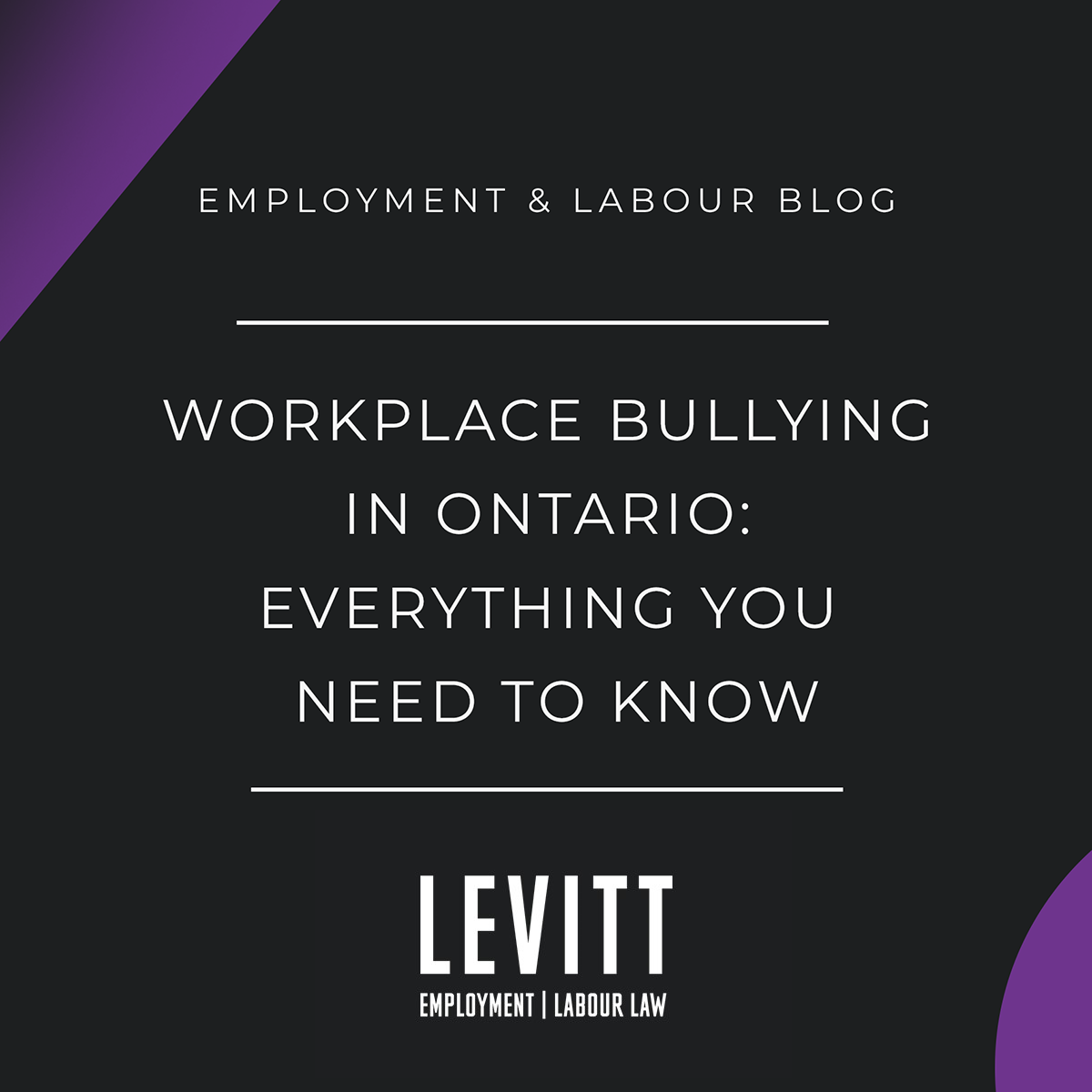Workplace bullying in Ontario can be conducted by management or other employees. An employee may be ridiculed or harassed with little help from their human resource department in stopping the behaviour.
Bullying in the workplace can amount to a constructive dismissal claim or a discrimination claim under the Ontario Human Rights Code. It is important for employees to report to his or her supervisor or human resource department, and if reporting does not solve the issue, to contact our firm immediately.
Constructive Dismissal Claim
Constructive dismissal is a type of wrongful dismissal where the employer has not directly terminated the employee, but instead the employer has failed to comply with the employment contract in a major respect. This could mean changing a fundamental term without employee acceptance or threatening to do so, therefore, pushing the employee to quit. Constructive dismissals can also occur in the case of bullying, where the employer has failed to provide employees with a safe working environment free from bullying and harassment.
It is an implied (meaning it does not have to be written) term of an employment contract for an employer to not create a poisoned or toxic work environment. Therefore, if the employer or employee is bullying an employee and the employee is forced to quit because of the employer’s actions, it may give rise to a constructive dismissal claim. If another employee is the one bullying others, and the employer has ignored it without investigating or reprimanding the employee, the employer will be held liable.
If your employer has created or allowed a toxic environment by bullying you, please give us a call so we can help you retrieve damages and determine your severance pay. If the employer’s actions reach a certain threshold, you may also be entitled to aggravated or punitive damages.
Discrimination Claim
If workplace bullying results in discrimination based on a prohibited ground, a discrimination claim under the Ontario Human Rights Code may exist. Generally, an employee will have to demonstrate that he or she suffered a negative effect in relation to others based on a prohibited ground in the Ontario Human Right Code which includes:
- Disability
- Sex
- Race
- Colour
- Ethnic Origin
- Age
- Religion or Creed
- Marital or Family Status
- Sexual Orientation/Gender Identity and Gender Expression
For example, if a woman is being bullied in the form of sexual harassment by another employee, an employer can be vicariously liable for the employee’s actions. Vicarious liability means when an employer is liable for damage caused to a third party by one or more of its employees. Specifically, sexual harassment in the workplace is broadly interpreted to include unwelcomed conduct of a sexual nature that detrimentally affects the work environment. Therefore, sexual “jokes” towards an employee would be objectively unwanted, and thus, discriminatory.
In the case of someone being left out of work functions because of their colour or race, this type of bullying in the form of exclusion can also be considered discrimination. Discrimination can also take place in the form of offensive comments, harassment, jokes and graffiti.
If you have been bullied at work based on a prohibited ground under the Ontario Human Rights Code, please give us a call so we can advocate on your behalf and get you the damages you deserve.

